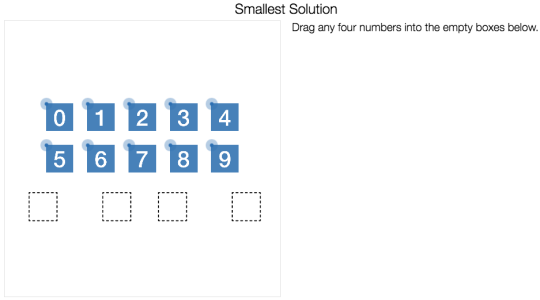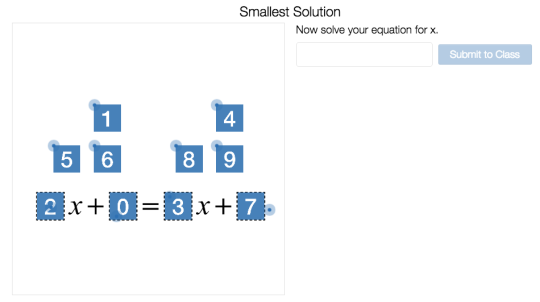Friday Fave for November 11
At Desmos, we are big fans of
Open Middle problems. So we’ve
tried our hand at cooking up a Desmo-fied version,
Smallest Solution, which is this week’s Friday Fave.
Here is a short list of things we love about Smallest Solutions.
1. It is easy to get started. Drag four digits into four different boxes.

2. Things quickly become interesting. Your digits are now constants and coefficients in a one-variable linear equation which you are challenged to solve.

3. Only now is the namesake challenge revealed—Find the smallest solution.
We’ll let you know whether you have the smallest solution in your class or someone else has found a smaller one. But we won’t tell you who, nor will we tell you whether anyone has found the smallest possible score—that’s a job for you and your classmates to do.
Is zero possible? How do you know? From dragging a few digits to building mathematical arguments in four short screens.
Tell us what you think about our initial treatment of an open middle problem. You just may convince us to build more of them, and perhaps see these in a future Friday Fave.
